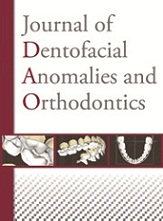No CrossRef data available.
Article contents
Requests for so-called esthetic treatment from the three orthodontic age groups: psychological perspectives and consequences for managing the care of these patients
Published online by Cambridge University Press: 29 May 2013
Abstract
Requests for orthodontic treatment have changed over the last few years due to the influence of social discourse and the promotion of the ideal of a forever young and ‘‘perfect’’ body.
The esthetic nature of these requests, even if they have always been implied in any orthodontic consultation, has changed and recently esthetics has been increasingly emphasized by prospective patients.
One consequence of these urgent requests is that orthodontists are on a slippery slope to becoming service providers and they therefore run the risk of no longer being recognized as Health Professionals.
Another consequence is that we now have patients with a very different ‘‘profile’’ which we will attempt to define in this article.
We will discuss esthetic treatment requests and the respective problems for each of three orthodontic age groups (children, adolescents and adults). We will illustrate these problems with three specific clinical cases. And since we are not trained to either identify or successfully manage the problems associated with this type of request, each of us has had to come up with our own clinical response. However, once we are certain or even suspect that we are dealing with a patient at risk (we will define this later) for whom an orthodontic solution is not appropriate, we then have to overcome our own reservations and refer the patient to a mental health professional whose specialized care will make it possible for the patient to become clearer about esthetic requests.
In most cases after everything is resolved, we can then professionally and respectfully take on the management of the patient. By taking these precautions, we will conduct ourselves as Health Professionals who seriously assess both the somatic and psychological dimensions of our patients’ requests.
Keywords
- Type
- Research Article
- Information
- Copyright
- © RODF / EDP Sciences




